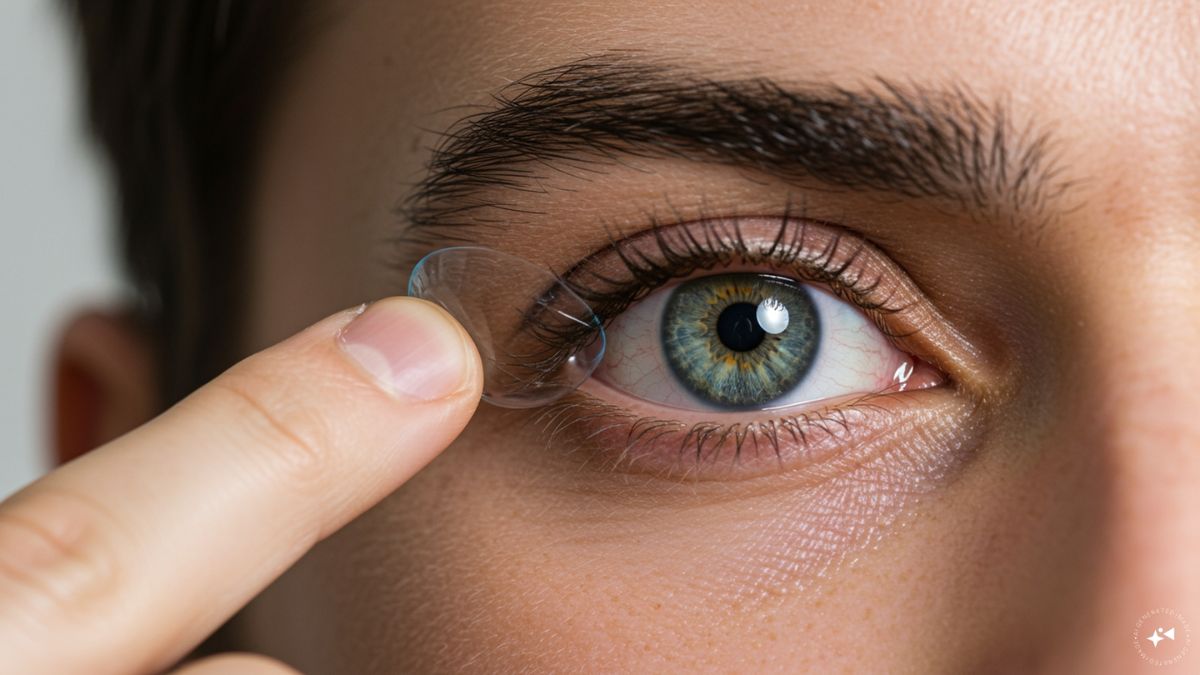Now, you can see in the dark with the help of special infrared contact lenses.
These new lenses have been created by researchers at the University of Science and Technology of China.
They are different from night vision goggles because they do not need any power to work. They even function when your eyes are shut.
ALSO READ | Super-sleepers: Why can some people go on about their day on just 4 hours of sleep?
This new development is part of the team’s effort to help people see more than what human eyes usually can.
So, what are these lenses? How do they work? Do they really help? We explain everything here.
Let’s take a look:
The all-new infrared contact lenses
Professor Tian Xue, a neuroscientist at the University of Science and Technology of China who led the study, said the work could lead to a variety of contact lenses, glasses and other wearable gear that allow people to have “super-vision”.
He also said the new lenses might help those who are colour blind.
According to The Guardian, the team has aimed to push the limits of human sight, which normally covers only a very small part of the full light spectrum.
Humans can see less than one hundredth of a per cent of the electromagnetic spectrum.
“Our research opens up the potential for noninvasive wearable devices to give people super-vision,” Tian Xue said.
He added, “There are many potential applications right away for this material. For example, flickering infrared light could be used to transmit information in security, rescue, encryption or anti-counterfeiting settings.”
Impact Shorts
More ShortsHow do they work?
The study, published in the journal Cell, describes how scientists mixed tiny particles with soft, non-toxic materials already used in regular contact lenses.
Once they confirmed the lenses were safe, they tested them on both humans and mice.
In tests with mice, the animals wearing the lenses were able to tell the difference between a dark box and one lit with infrared light. They chose the dark box more often, which showed they could detect the infrared light. Mice without the lenses showed no clear preference.
In human trials, people wearing the lenses could spot flashing infrared signals and tell where the light was coming from.
To help people see more than usual, the researchers created what they call upconversion nanoparticles. These particles take in infrared light and turn it into red, green or blue light that humans can see.
The particles used in this study were able to pick up near-infrared light, which has wavelengths that are just beyond human vision, and convert it into visible colours, according to The Guardian.
Interestingly, users saw better when their eyes were closed. That’s because eyelids block regular light more than infrared, making it easier to detect the signals without interference.
How effective are they?
Near-infrared light lies just beyond what the human eye can normally see. While some animals can sense this type of light, they likely cannot form clear images from it.
Night-vision goggles help people see infrared radiation, but they are large and need batteries or another power source to function.
These new contact lenses avoid such issues. They are lightweight, do not need power, and can show richer images in multiple colours, unlike night-vision goggles, which usually display images in shades of green, Nature Magazine reported.
Still, the lenses are not perfect. The tiny particles inside them scatter light, which causes the images to appear blurry.
To fix this, the researchers added the same technology to a pair of glasses with special lenses that help direct the light better.
Another point to note is that, unlike night-vision devices that boost faint signals, these contact lenses can only pick up strong infrared light, like that from LED sources. Because of this, some experts doubt how practical the lenses will be.
Professor Xue said, “We also found that when the subject closes their eyes, they’re even better able to receive this flickering information, because near-infrared light penetrates the eyelid more effectively than visible light, so there is less interference.”
He added, “By converting red visible light into something like green visible light, this technology could make the invisible visible for colour blind people.”
Looking ahead, he said the team hopes to work with materials and optical experts to make lenses that can capture “more precise spatial resolution and higher sensitivity”.


)

)
)
)
)
)
)
)
)



